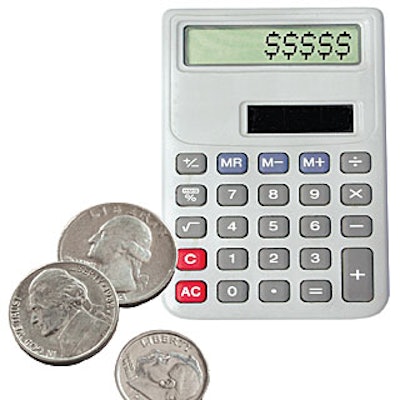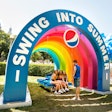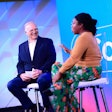Planners feel great when events look good and attract lots of attendees. But nice feelings don’t pay the bills—and many high-level corporate executives are looking to translate those feelings into numbers and see a definite return on investment (ROI). Collect and report the data you need with these strategies for measuring ROI.
Plan Ahead
Gathering post-event feedback is useful, but you can get a more complete measure of your success by starting before the event. First, set measurable goals and determine the benchmarks you’ll evaluate—like growing attendance numbers, building brand awareness, or increasing brand preference. If appropriate, you may want to gather guests’ opinions with a pre-event survey and then ask the same questions after the event to determine how their opinions have changed.
Conducting exit interviews as guests leave can provide some feedback, but short surveys conducted on the phone, on the Web, or via mail or email can be better. “The impact of an event grows over time,” says Gordon Berg, a senior strategist at Michigan-based Event Metrics research company. “When we follow up with attendees, we ask, ‘Have you talked to friends and family?’ And we’re able to measure word of mouth that way. It’s what we call BPT—buzz per thousand.”
Commit to Computing
“ROI is hard to identify, but we have consistent measurement as standard operating procedure,” says Sprint director of events marketing Amanda Moses. With her 15 full-time staffers, she requires that all events—for internal staff or external clients—have measurable objectives, like increasing attendance over the previous year’s program, increasing the number of attendees who say they are more likely to use Sprint as a result of the event, or increasing the number of attendees reporting that the event had a favorable impact on their impression of the brand. And she’s serious about it: “If internal clients say, ‘It’s just a meeting; we don’t have specific objectives,’ I say, ‘Well then can it be done through internal communications?’” This forces them to establish—and strive to achieve—specific objectives, or scrap the meeting (and, therefore, save money).
After all Sprint events, Moses seeks feedback from everyone involved, from internal executives, to external clients, to the companies that produced the signage and name badges. Comprehensive post-event surveys ask basic, unambiguous questions like, “Did this event positively impact your impression of Sprint?” or “Was this breakout session effective?” with all responses measured on a one-to-five scale, and have mechanisms to gather other comments.
Give Prizes
“Offering a reward is an effective form of generating feedback for almost all attendee groups,” says Marc Goldberg, partner in Massachusetts-based event measurement firm Marketech Inc.
While working with DaimlerChrysler, Event Metrics’ Berg has offered prizes like an Alaskan cruise for two, or trips to vacation destinations, where winners can drive Jeeps or attend Nascar events, prizes that further reinforce the company’s brands while encouraging attendees to provide feedback. But you don’t have to spend that much money. “Never underestimate the
power of a T-shirt or hat to motivate people,” Berg says.
Go High-Tech
Event measurement software can help measure event success by calculating data from your event and generating a dollar figure returned per dollar invested. For example, Marketech offers software packages designed to help planners measure ROI after a trade show by entering the variables and dollar amounts invested in the exhibit, and dividing the cost of the event by the amount of sales generated. If $1 million gross sales were generated from your trade show and it cost $100,000 to produce it, you got back $10 for every dollar invested.
“The bad news is that leads are seldom able to be tracked all the way from an event to a sale, so you won’t have the exact numbers needed to calculate actual ROI,” says Jane Lorimer, managing director of Denver-based Lorimer Consulting Group. “The good news is that there are ways to accurately estimate ROI from an event.” Some software packages estimate that return by using the number of leads you expect to close and other speculative information.
Set Up Tracking Tools
DaimlerChrysler senior brand manager of events Lou Bitonti coordinates promotional events around the country that he measures with real sales data. “In the last six years or so, money has been flowing more from traditional advertising to more experiential types,” Bitonti says. “And we knew we had to have analytical processes to be able to justify our programs.”
When guests register to test-drive the company’s latest models on closed courses, DaimlerChrysler collects their information for its database, and puts a code on all discount certificates distributed to guests. Then Bitonti’s team can compare the names on lists of new car purchases with his event registrants
and certificate codes to determine how many people purchased cars after the programs.
Make the News
If your event gets media coverage, use published advertising rates to measure the dollar value of the press you receive. For example, if you get 20 column inches of newspaper coverage, you can calculate what an advertisement of a similar size in the same publication would cost. And don’t forget that unpaid media coverage is more credible to readers than paid advertising. The Public Relations Society of America estimates voluntary print media coverage has about two and a half times the impact of an ad on a reader—make that three times for front-page news. And remember to calculate the spared cost of producing an ad. “What would it have cost to assemble the media? Factors include travel
expenses, accommodation, project coordination, and more,” Lorimer says. “It can add up to thousands before you even run the ad.”
—Alesandra Dubin
Posted 03.02.05
This story originally appeared in the February/March 2005 issue of the BiZBash Event Style Reporter.
Plan Ahead
Gathering post-event feedback is useful, but you can get a more complete measure of your success by starting before the event. First, set measurable goals and determine the benchmarks you’ll evaluate—like growing attendance numbers, building brand awareness, or increasing brand preference. If appropriate, you may want to gather guests’ opinions with a pre-event survey and then ask the same questions after the event to determine how their opinions have changed.
Conducting exit interviews as guests leave can provide some feedback, but short surveys conducted on the phone, on the Web, or via mail or email can be better. “The impact of an event grows over time,” says Gordon Berg, a senior strategist at Michigan-based Event Metrics research company. “When we follow up with attendees, we ask, ‘Have you talked to friends and family?’ And we’re able to measure word of mouth that way. It’s what we call BPT—buzz per thousand.”
Commit to Computing
“ROI is hard to identify, but we have consistent measurement as standard operating procedure,” says Sprint director of events marketing Amanda Moses. With her 15 full-time staffers, she requires that all events—for internal staff or external clients—have measurable objectives, like increasing attendance over the previous year’s program, increasing the number of attendees who say they are more likely to use Sprint as a result of the event, or increasing the number of attendees reporting that the event had a favorable impact on their impression of the brand. And she’s serious about it: “If internal clients say, ‘It’s just a meeting; we don’t have specific objectives,’ I say, ‘Well then can it be done through internal communications?’” This forces them to establish—and strive to achieve—specific objectives, or scrap the meeting (and, therefore, save money).
After all Sprint events, Moses seeks feedback from everyone involved, from internal executives, to external clients, to the companies that produced the signage and name badges. Comprehensive post-event surveys ask basic, unambiguous questions like, “Did this event positively impact your impression of Sprint?” or “Was this breakout session effective?” with all responses measured on a one-to-five scale, and have mechanisms to gather other comments.
Give Prizes
“Offering a reward is an effective form of generating feedback for almost all attendee groups,” says Marc Goldberg, partner in Massachusetts-based event measurement firm Marketech Inc.
While working with DaimlerChrysler, Event Metrics’ Berg has offered prizes like an Alaskan cruise for two, or trips to vacation destinations, where winners can drive Jeeps or attend Nascar events, prizes that further reinforce the company’s brands while encouraging attendees to provide feedback. But you don’t have to spend that much money. “Never underestimate the
power of a T-shirt or hat to motivate people,” Berg says.
Go High-Tech
Event measurement software can help measure event success by calculating data from your event and generating a dollar figure returned per dollar invested. For example, Marketech offers software packages designed to help planners measure ROI after a trade show by entering the variables and dollar amounts invested in the exhibit, and dividing the cost of the event by the amount of sales generated. If $1 million gross sales were generated from your trade show and it cost $100,000 to produce it, you got back $10 for every dollar invested.
“The bad news is that leads are seldom able to be tracked all the way from an event to a sale, so you won’t have the exact numbers needed to calculate actual ROI,” says Jane Lorimer, managing director of Denver-based Lorimer Consulting Group. “The good news is that there are ways to accurately estimate ROI from an event.” Some software packages estimate that return by using the number of leads you expect to close and other speculative information.
Set Up Tracking Tools
DaimlerChrysler senior brand manager of events Lou Bitonti coordinates promotional events around the country that he measures with real sales data. “In the last six years or so, money has been flowing more from traditional advertising to more experiential types,” Bitonti says. “And we knew we had to have analytical processes to be able to justify our programs.”
When guests register to test-drive the company’s latest models on closed courses, DaimlerChrysler collects their information for its database, and puts a code on all discount certificates distributed to guests. Then Bitonti’s team can compare the names on lists of new car purchases with his event registrants
and certificate codes to determine how many people purchased cars after the programs.
Make the News
If your event gets media coverage, use published advertising rates to measure the dollar value of the press you receive. For example, if you get 20 column inches of newspaper coverage, you can calculate what an advertisement of a similar size in the same publication would cost. And don’t forget that unpaid media coverage is more credible to readers than paid advertising. The Public Relations Society of America estimates voluntary print media coverage has about two and a half times the impact of an ad on a reader—make that three times for front-page news. And remember to calculate the spared cost of producing an ad. “What would it have cost to assemble the media? Factors include travel
expenses, accommodation, project coordination, and more,” Lorimer says. “It can add up to thousands before you even run the ad.”
—Alesandra Dubin
Posted 03.02.05
This story originally appeared in the February/March 2005 issue of the BiZBash Event Style Reporter.




















